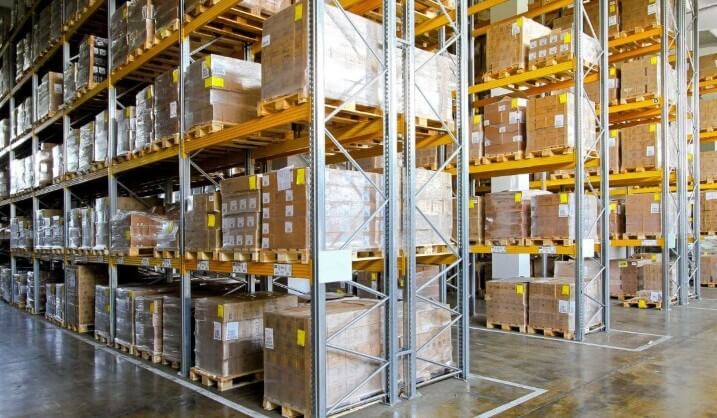
Organizing a warehouse efficiently demands high attention to detail, especially regarding rack labeling. Effective rack labeling ensures seamless inventory management, reduces picking errors, and improves overall warehouse operations. Any lack of clarity in labels can translate into wasted time and effort, impacting productivity. Here are ten best practices for warehouse rack labeling to improve efficiency and streamline operations. These steps will help you create a labeling strategy that enhances the functionality and durability of your warehouse storage equipment, from design tips to application techniques.

Proper rack labeling serves as a foundation for warehouse organization. Clear labeling assists workers in locating and storing items quickly, whether managing heavy stock turnover or overseeing large inventory. Rack labeling minimizes confusion, reduces time spent searching for items, and prevents costly errors. Efficient rack labeling safeguards workflow and maintains productivity for businesses relying on warehouse storage equipment, even during high-demand periods.
Proper rack labeling is crucial for maintaining an organized and efficient warehouse operation. Businesses can streamline inventory management, improve safety, and optimize overall productivity by implementing clear and consistent labeling practices. Below are some essential best practices to consider when setting up warehouse rack labeling systems.
Consistency eliminates confusion. Implement a labeling system that remains unvaried across your entire warehouse, including using similar formats, fonts, and styles on all rack labels. Any inconsistency risks misinterpretation and disrupts workflow.
Make labels uniform in size and structure, regardless of the rack’s function. A cohesive system ensures that employees instantly understand how to decode and use the labels, leading to faster operations and fewer errors.
Labels should withstand environmental wear and tear, such as temperature changes, dust, moisture, and direct handling. Laminated polypropylene, heavy-duty vinyl and similarly durable materials maintain readability over time. Opt for materials designed to endure freezing environments in cold storage warehouses. Use adhesives that retain their properties in extreme conditions, guaranteeing that labels remain securely affixed.
Readability is non-negotiable. Select fonts that are large, bold, and without unnecessary embellishments. Sans-serif fonts work well, as they’re straightforward to read. Additionally, choose text sizes appropriate for the rack’s height and the average distance from which an employee will read them.
Conduct a visibility test for potential label designs before applying them across your setup. Doing so ensures all employees can read the information without straining their eyes, even during fast-paced picking workflows.
Introduce a color-coded system into the labeling design. Assign colors for different functions, zones, or categories. For instance, designate yellow for parts inventory and blue for finished goods.
Colors add a visual layer of organization, making it easier for workers to categorize and access items. Remember to educate your entire workforce about the meaning of each color to avoid misinterpretation.
Barcodes and QR codes elevate the efficiency of rack labeling. These scannable elements allow employees to instantly retrieve relevant product data with a handheld or mounted scanner, significantly reducing manual lookup time.
Integrate these codes consistently onto every label. These codes provide real-time insights when linked to your warehouse management system (WMS), allowing better decision-making and inventory tracking with minimal effort.
Label placement impacts accessibility. Labels should appear in spots where they remain visible and accessible, whether your racks are fully stocked or empty.
Attach larger, well-positioned overhead labels in warehouses with towering racks. Ground-level racks may require smaller labels that sit closer to eye level. Always plan placement in a manner that eliminates the need for excessive stretching or bending by workers.
Test your labeling system across smaller warehouse sections before updating all rack labels. Use this feedback period to identify unforeseen application issues, such as adhesive failures, fading text, or employee confusion regarding new formats.
Testing minimizes disruption during full-scale implementation, reducing trial-and-error considerably.
Rack labels demand regular audits to ensure accuracy and readability. Over time, old or damaged labels may no longer serve their purpose.
Schedule routine inspections to address any fading or peeling labels. Immediately replace old or worn labels to maintain operational fluency and coherence in inventory management.
A well-planned warehouse layout works together with effective rack labeling. Number racks sequentially to align with your workflow and storage patterns. For instance, consider a numeric system for rows and an alphanumeric system for racks within those rows.
This systematic approach breaks down complex warehouse architectures into easily recognizable sections, further improving operational navigation.
Introducing a new rack labeling system without employee training creates ambiguity. Take sufficient time to educate your workforce about reading and interpreting the design of your labels.
Conduct role-specific training sessions tailored to picking, inventory audits, and stock replenishment employees. Such onboarding minimizes learning curves, fostering swift facility-wide system adoption.
Failing to implement an effective labeling system can lead to various operational challenges that can disrupt your business. Without proper labels, workers are more likely to misplace or misfile items, leading to increased time spent searching for products and delaying critical processes such as order fulfillment.
These best practices for warehouse rack labeling remain one of the most impactful components of business operations. It complements the role of warehouse storage equipment in maintaining fluidity and clarity across operations.
Thoughtfully implementing these best practices can simplify workflow management while reducing errors. Adhering to these practices ensures your labeling strategy meets your current and future operational needs, whether you work with 100 or 10,000 racks. Looking for reliable labeling solutions? Browse our products at Pantero today to get started!

